News
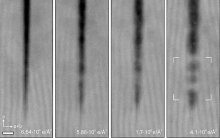
Surprising discovery shows electron beam radiation can repair nanostructures
Posted
In a surprising new study, researchers at the University of Minnesota Twin Cities have found that the electron beam radiation that they previously thought degraded crystals can actually repair cracks in these nanostructures.
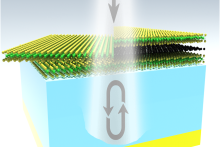
Research brief: UMN-led team achieves near-perfect light absorption in atomic-scale material
Posted
A University of Minnesota Twin Cities-led team has, for the first time, engineered an atomically thin material that can absorb nearly 100 percent of light at room temperature, a discovery that could improve a wide range of applications from optical communications to stealth technology.

New material could hold key to reducing energy consumption in computers and electronics
Posted
A University of Minnesota Twin Cities team has, for the first time, synthesized a thin film of a unique topological semimetal material that has the potential to generate more computing power and memory storage while using significantly less energy.
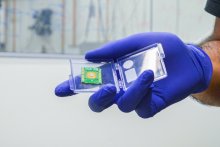
New superconducting diode could improve performance of quantum computers and artificial intelligence
Posted
A University of Minnesota Twin Cities-led team developed a more energy-efficient, tunable superconducting diode—a promising component for future electronic devices—that could help scale up quantum computers for industry and improve artificial intelligence systems.
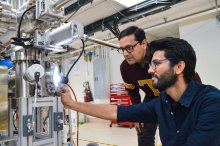
Stretching metals at the atomic level allows researchers to create important materials for quantum, electronic, and spintronic applications
Posted
A University of Minnesota Twin Cities-led team has developed a first-of-its-kind breakthrough method that makes it easier to create high-quality metal oxide films that are important for various next generation applications such as quantum computing and microelectronics.

Researchers create breakthrough spintronics manufacturing process that could revolutionize the electronics industry
Posted
University of Minnesota Twin Cities researchers, along with staff at the National Institute of Standards and Technology (NIST), have developed a breakthrough process for making spintronic devices that has the potential to create semiconductor chips with unmatched energy efficiency and storage for use in computers, smartphones, and many other electronics.
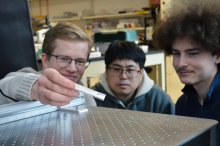
Researchers use ultrasound waves to move objects hands-free
Posted
University of Minnesota Twin Cities researchers have discovered a new method to move objects using ultrasound waves, opening the door for using contactless manipulation in industries such as robotics and manufacturing.
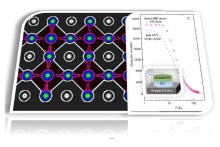
Researchers solve mystery surrounding dielectric properties of unique metal oxide
Posted
A University of Minnesota Twin Cities-led research team has solved a longstanding mystery surrounding strontium titanate, a metal oxide semiconductor, providing insight for future research on the material and its applications to electronic devices and data storage.

CSE Professor Beth Stadler discusses nanotechnology research on NNI podcast
Posted
Electrical engineering Professor Beth Stadler was recently featured on the National Nanotechnology Initiative (NNI) podcast, where she discussed how nanotechnology can play a role in improving organ preservation for transplantation.
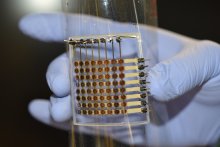
Researchers develop first fully 3D-printed, flexible OLED display
Posted
In a groundbreaking new study, researchers at the University of Minnesota Twin Cities used a customized printer to fully 3D print a flexible organic light-emitting diode (OLED) display.
